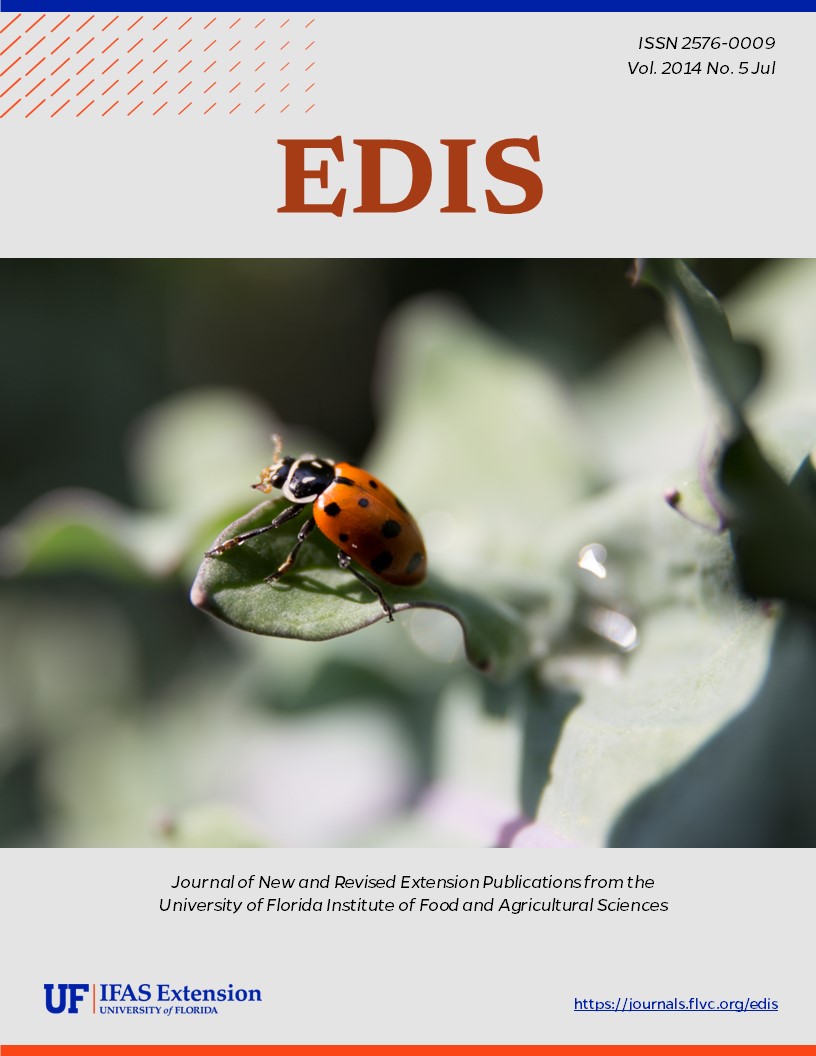Abstract
On-farm dye tests provide simple, low-cost methods to understand how water and dissolved nutrients (e.g., nitrogen) will move within beds at a given farm. If it is not feasible for the grower to conduct an on-farm dye test, results from a dye test with similar site characteristics—including region, soil type, bed geometry, and drip tape—can be used. The intent of this publication is to explain procedures of a dye test and describe the movement pattern for Immokalee fine sand, a typical soil found in central and south Florida. We also show the effect of antecedent soil moisture on water movement in the bed. This 6-page fact sheet was written by Sanjay Shukla, Nathan Holt, and Gregory Hendricks, and published by the UF Department of Agricultural and Biological Engineering, July 2014.

